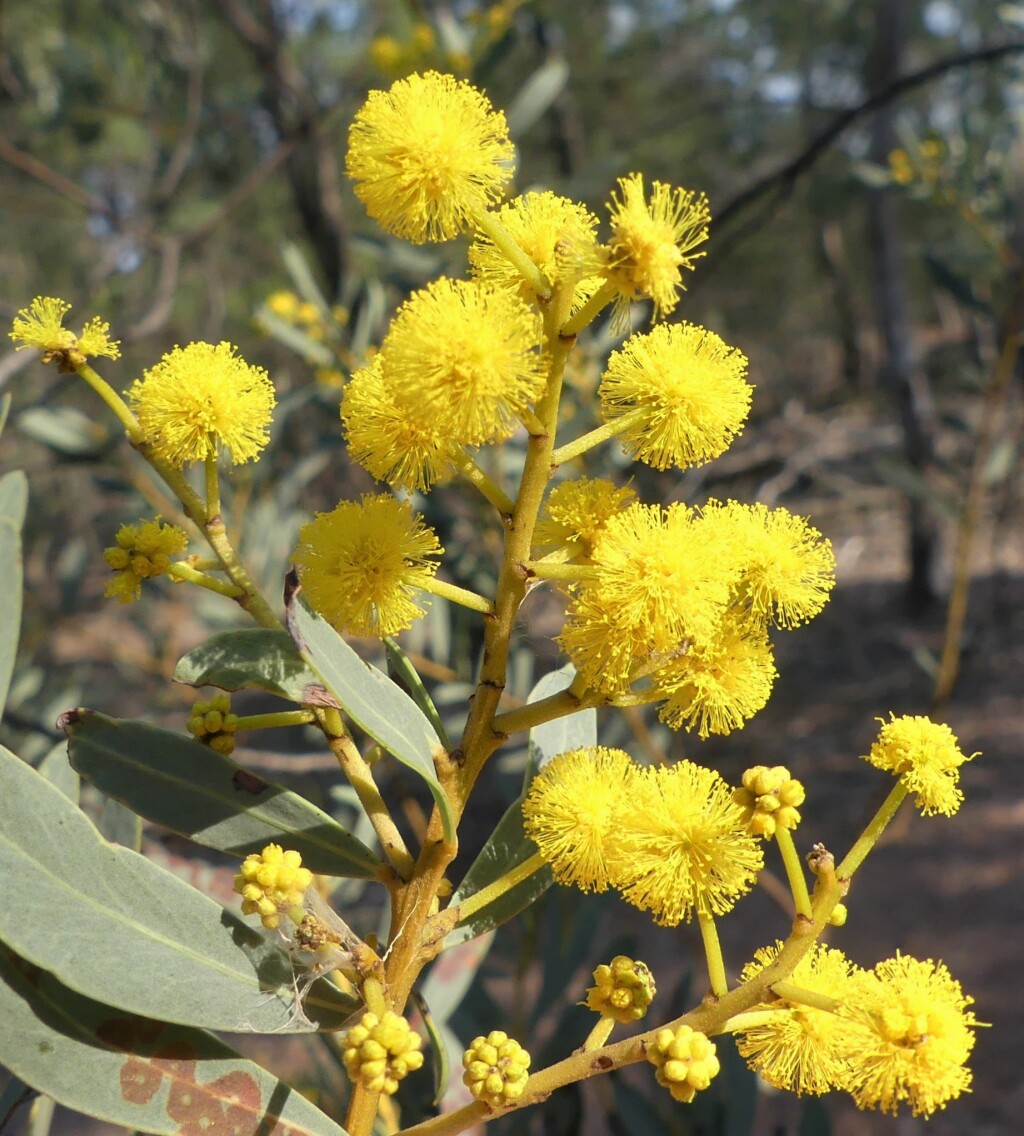Acacia decora
Rchb. Western Silver WattleShrub normally 1–3 m high; branchlets ribbed, (in Victoria) covered in appressed, minute hairs. Phyllodes on raised stem projections, oblanceolate to narrowly oblanceolate, narrowly elliptic, or more or less linear, usually 2–5.5 cm long and 2–8 mm wide, usually glabrous, grey-green to glaucous, narrowed at base, obtuse to acute; midrib moderately prominent, lateral veins obscure or absent; glands 1–2, lowermost usually 5–15 mm above pulvinus. Racemes prolific in upper axils, rachis usually 3–6 cm long, covered in white to golden, appressed, minute hairs; peduncles usually 3–6 mm long, with hairs as on rachis; heads globular, 15–30-flowered, golden. Flowers 5-merous; sepals united. Pods to 11 cm long, 4–9 mm wide, firmly chartaceous to thinly coriaceous, glabrous, sometimes pruinose; seeds longitudinal, more or less oblong, 4–6 mm long, somewhat shiny, black, funicle-aril half to three-quarters the length of seed. Flowers Aug.–Sep.
VVP, VRiv, GipP, NIS. Also Qld, NSW. Widespread in Queensland and New South Wales, but in Victoria known only from around Dookie and Thoona (west of Wangaratta) and near Wodonga. Restricted to roadside and railway remnants of open woodland.
A somewhat variable species but generally recognized by its relatively short, commonly oblanceolate phyllodes and long racemes with often light golden appressed hairs on their axes and peduncles. Acacia decora sometimes resembles A. buxifolia which is distinguished by its usually glabrous inflorescence rachis and peduncles.
Entwisle, T.J.; Maslin, B.R.; Cowan, R.S.; Court, A.B. (1996). Mimosaceae. In: Walsh, N.G.; Entwisle, T.J., Flora of Victoria Vol. 3, Dicotyledons Winteraceae to Myrtaceae, pp. 585–658. Inkata Press, Melbourne.
 Spinning
Spinning

